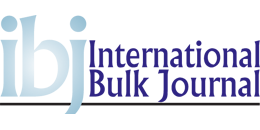


(Posted on 31/01/19)
The heads of several steel industry associations in the United States remained divided on the effectiveness of the Section 232 tariffs on US steel imports, but found some common ground on the subject of the yet to be signed US-Mexico-Canada Agreement (USMCA).
With no end to the Section 232 tariffs on US imports of steel in sight, the focal point of a panel discussion at SteelOrbis’ 10th Annual Rebar & Wire Rod Conference in Las Vegas last week centred around the impact thus far of, and possible end game for, the Trump administration’s signature trade policy.
“Quotas I think are the lesser of two evils, quotas have the advantage of at least allowing material in,” Independent Steel Alliance president Chris Casey said.
“No question, they are better than tariffs, but my question would be, if we’re going to have a quota system are we still going to penalize the buyers on the price side?” he asked.
“If materials [imported steel] are going to come in, are they going to come in at reasonable prices?” Casey asked.
From his perspective, John D. Foster, president of Kurt Orban Partners and chairman of the American Institute for International Steel (AIIS), did not see quotas as a viable solution to dealing with global steel overcapacity.
“There’s also talk of replacing tariffs with quotas, which could be an interesting possibility... “I think again, as we saw back in the Section 201 days, that’s a failed model as well... we actually saw domestic production capacity go down rather than up,” Foster said.
“I think the quota system is extremely burdensome on both the Commerce Department and US consumers,” he said, also noting issues with the Section 232 exclusion process.
Further to that, Foster said the rise in domestic steel prices that has accompanied the implementation of the Section 232 tariffs has had the unintended effect of ensuring there still is a market for imported steel within US borders.
“We need to look at the fundamental reason imports were able to continue at all.. I think that was the significant price increases that put US steel prices at the highest in the world,” he said. “In other words, any return of significant imports was somewhat of a self-inflicted wound so to speak, for many of the increases eclipsed the tariff rates themselves.”
For Casey, imports remain vital to ensure domestic steel prices do not rise to levels that harm US market participants, who cited nervousness among independent fabricators about sourcing material in the wake of Commercial Metals Co's acquisition of Gerdau’s North American rebar assets, given the number of downstream operations involved.
Even independent fabricators who don’t participate in the import market have indicated that “it’s important to have a small amount of that material in the market to keep domestics honest," Casey said. “That’s a phrase that comes up an awful lot.”
Meanwhile, Thomas J. Gibson, president and chief executive officer of the American Iron and Steel Institute (AISI), stressed that the Section 232 tariffs have succeeded where previous efforts failed.
“We ran into the same great wall of obfuscation that we always ran into with China... They would not produce the data, and it would always be kick the can down the road and let’s get to the next meeting,” he said. “Thank God we have an administration that’s going to back up the rhetoric with some tough action.”
Gibson said one of the more crucial successes of the tariffs have been their ability to force policy changes in other countries. “Steel from China is going somewhere else,” he said. “A lot of these other countries are starting to wake up and impose their own safeguard actions against steel from certain areas, and quite frankly we think that’s a good thing.”
Positive impacts from the tariffs on the domestic industry, Gibson said, include steel shipments increasing by 4.7% at domestic mills last year, import volumes declining by 10.5% and capacity utilization improving 81% in November from 76% in April.
Nonetheless, Casey outlined what he said were the three primary negative effects of the tariffs.
Not only have the tariffs raised the cost of steel to the extent that wood has emerged as a competitor to steel for building material, but they’ve also created supply chain anxiety in that market participants have to find new sources for material that fall under the tariffs, Casey told attendees.
Casey also said the Trump administration’s tariffs have led to retaliatory measures from other countries, suppressing the demand for American products in global markets.
Though Casey conceded the negative impacts have yet to be fully felt while fabricators and contractors enter 2019 with strong backlogs, that day is coming.
“We will see the negative impacts of these tariffs, we’re just not seeing them yet,” he said.
ADM and Mitsubishi Corporation have signed a non-binding memorandum of understanding to form a strategic... Read more
ESL Shipping and global steel manufacturer SSAB have agreed on a multi-year extension of the agreement... Read more
Anglo American’s Sakatti copper and polymetallic project in Finland has been designated as a &... Read more
FEFAC, representing the EU compound feed and premix manufacturers, noted with deep concern the announced... Read more
Catering to the growing demand from India’s confectionery, infant formula, and dairy sectors,... Read more
Khalifa Economic Zones Abu Dhabi – KEZAD Group, the largest operator of integrated and purpose... Read more
Rio Tinto will invest $1.8 billion1 to develop the Brockman Syncline 1 mine project (BS1), extending... Read more
Catherine Cobden, President and CEO of the Canadian Steel Producers Association (CSPA), has released... Read more
Enough domestic ferrous scrap is available for electric arc furnace (EAF) steelmakers to supply nearly... Read more
Cargill’s Ocean Transportation business and leading tanker shipping company, Hafnia, have joined... Read more